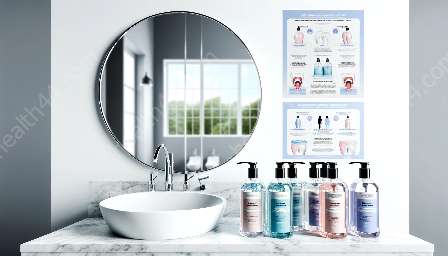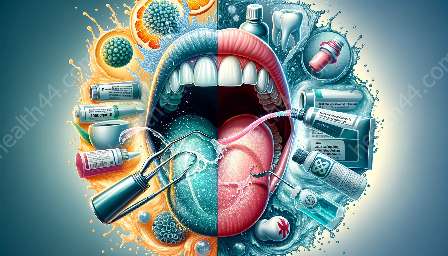Chlorhexidine mouthwash has been widely used for its antimicrobial properties in dental care, but its effects on various types of dental restorations have been a subject of interest and concern.
Understanding Chlorhexidine Mouthwash
Chlorhexidine is an antiseptic and disinfectant that is commonly used in oral healthcare products such as mouthwashes and rinses. It is effective against a wide range of microorganisms, including bacteria, fungi, and viruses, making it a popular choice for maintaining oral hygiene and preventing infections.
Impact on Dental Restorations
When it comes to the effects of chlorhexidine mouthwash on different types of dental restorations, it is important to consider the potential interactions and implications for oral health and restoration longevity.
Metal-Based Restorations
For metal-based restorations such as amalgam fillings or metal crowns, chlorhexidine mouthwash is generally considered safe and does not significantly impact the integrity or longevity of these restorations. The antimicrobial properties of chlorhexidine can help prevent plaque accumulation around metal restorations, thereby reducing the risk of secondary decay and periodontal issues.
Composite and Porcelain Restorations
On the other hand, chlorhexidine mouthwash may have a different impact on composite and porcelain restorations. Studies have suggested that prolonged and frequent use of chlorhexidine mouthwash could potentially lead to discoloration or surface deterioration of these types of restorations. It is important for patients with composite or porcelain restorations to be mindful of the frequency and duration of chlorhexidine use to minimize any adverse effects.
Glass Ionomer Restorations
Glass ionomer restorations are commonly used in pediatric dentistry and certain dental procedures. The interaction between chlorhexidine mouthwash and glass ionomer restorations may vary depending on the specific formulation of the glass ionomer material. Some research indicates that chlorhexidine can affect the surface properties of certain types of glass ionomer materials, potentially compromising their longevity and adhesion to tooth structure.
Considerations for Clinical Practice
Based on the existing evidence and clinical experience, it is important for dental professionals to consider the type of dental restorations when recommending or prescribing chlorhexidine mouthwash to their patients. Individualized oral hygiene recommendations that take into account the patient’s specific restorations and oral health status are essential for maintaining the balance between antimicrobial efficacy and preservation of dental restorations.
Conclusion
In conclusion, the effects of chlorhexidine mouthwash on different types of dental restorations can vary, and it is essential to consider the implications for patient care and oral health management. While chlorhexidine offers valuable antimicrobial benefits, its potential impact on certain dental restorations underscores the need for personalized oral hygiene strategies and ongoing research to enhance our understanding of these interactions.









